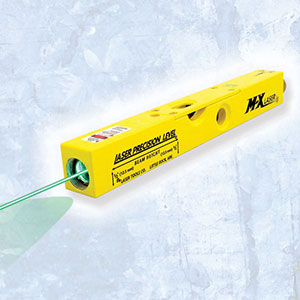Famous Facts about Laser Tools Co., Inc.

The first laser invented by Laser Tools Co. in 1992 was the L50. This was a shirt-pocket sized, single red beam, laser level that used the laser beam to extend the level reference. The L50 used a first-generation, laser diode that was in itself a derivative of the compact disc and entertainment industry.
The first Solid State Laser Diodes created an infrared laser light which was not visible to the human eye because it was easier to produce and you didn’t need to see the light inside of a CD player anyway. AT&T asked the CD manufactures to make an eye visible version of the Solid State Laser Diode so they could use it for telecommunications through optical fibers.
When the eye visible, red laser diode was invented it could also replace the HeNe glass tube lasers that are fragile and short lived.
This repurpose is the basis of the present Solid State Laser Diode used in the Model L50M MX Laser Micro Level™. Note: The M after the Model number L50M is an abbreviation for the word Magnum® which was a registered trademark by Empire Level in 1992. The Model number description and trademark Laser Micro Level™ also avoids a conflict with the registered trademark Laser Level® owned by Spectra Precision in 1992.
One year after the Model L50 Laser Level was invented and introduced, the L100 Laser Precision Level™ was invented. This was a longer laser level at a 9” length with a machined flat bottom surface, precision 5 minute of arc level vial and large optics. This means that the laser dot could shoot farther, retain a smaller dot size with internal features for marking and insure a +/- 1/8” accuracy over a 100’ distance. The L100M Laser Precision Level™ was the most advanced, hand-held laser level in the world at the time of its invention. This caused standard carpenter level manufactures worldwide to scramble to build a laser into their levels. However, the L100M Laser Precision Level’s™ invention by itself was not the catalysis that spawned the use of a laser beam for common construction applications including job site layouts, brick and mortar fabrication and line of sight alignment. It was the melding of another component to the “Laser Level” that opened the world to the utility and ease-of-use of a tool that would save time and money in a first world environment.
Lasers used in construction improve job site accuracy. This notion results in fewer people to do the same as before. So, any invention or discovery that addresses “The-People-Issue” is noteworthy.

